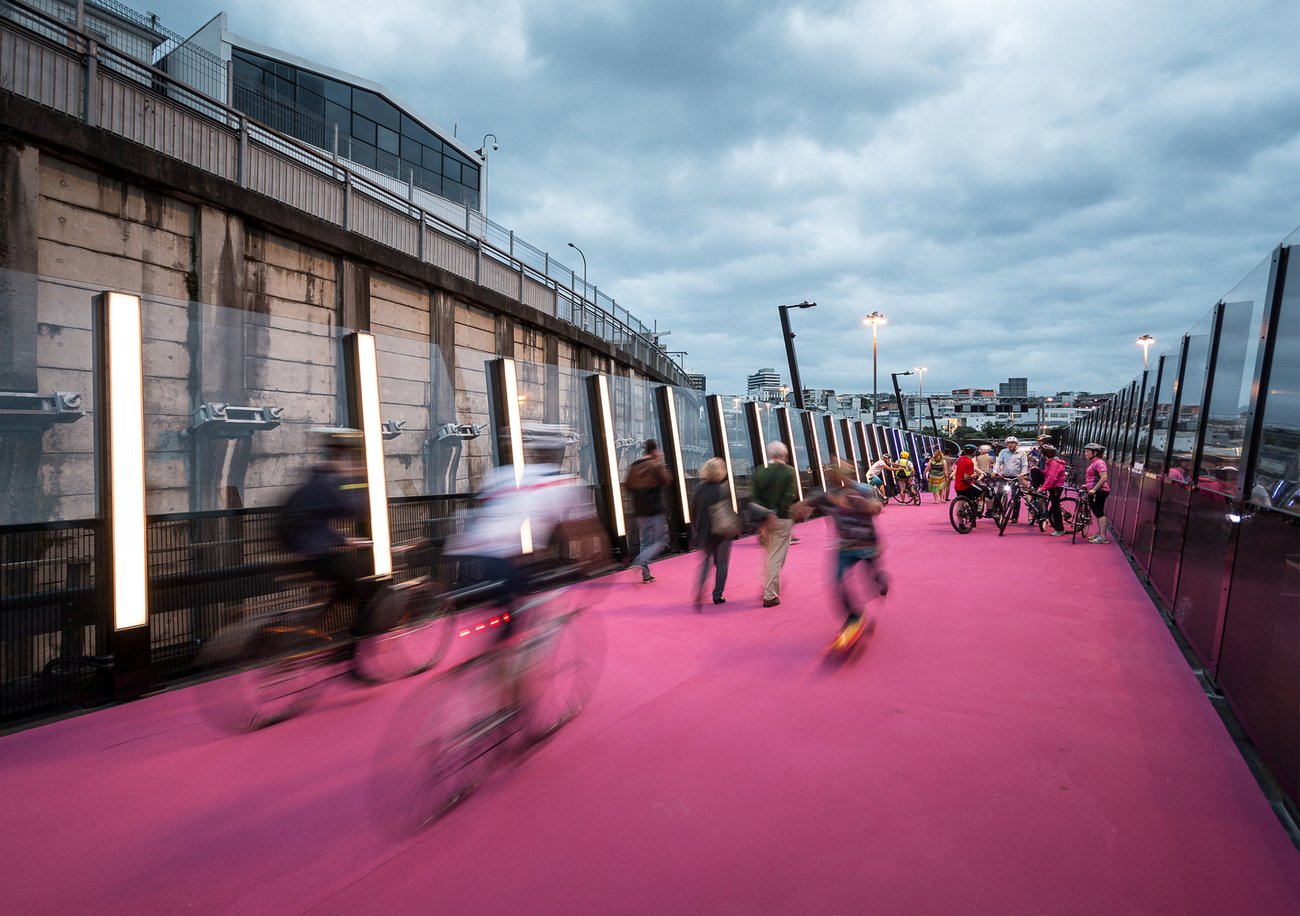Pretty in pink: LightPath wins Best Award for spatial design

Te Ara i Whiti – LightPath, or #LightPathAKL as it’s more formally known, is an innovative new cycleway joining two parts of Auckland city previously separated by motorways.
A collaboration between architects Monk Mackenzie Architects, LandLAB, NZTA (which owns the motorway infrastructure), Auckland Transport (which manages the Auckland cycle network) and the Auckland Council, the LightPath came about when a study showed the potential for a redundant motorway off ramp could be used to connect to the inner city cycleway starting on Nelson Street.
“They all realised that they had a great bridge at one end and the Nelson Street cycleway at the other and they realised they needed to do something interesting in between to join them together,” says Henry Crothers, director of LandLAB. “We were tasked with figuring out what we could do with it in a relatively short period of time, and with a reasonably modest amount of money.”
The asphalt highway was coated in a bright pink resin. 300 custom LED light boxes were placed along the eastern edge to create a light spine. The lights have sensors and are programmable to allow an infinite number of designs and patterns.
“We needed to do something that was big and bold and strong in the context of all that big stuff up there,” Crothers. “It needed to be a singular strong element that would hold its own in terms of the bigness of the motorway infrastructure. It needed to be a big idea, like ‘blink, I get it’, and at an urban scale, it’s a landmark or an artwork, something that people drive pass and move through and experience as a singular thing.”
“We were interested in the way that the motorway has different moods and is kind of alive with the ebb and flow of traffic, this would be about movement, and what we created would respond to those rhythms of the way the motorway works with a daytime and a night time. So we were interested in the idea of light and the idea that the light work wouldn’t just be static, that it’d be dynamic and responsive to movement and users. So all those lights are programmed LEDs and have scanners attached to them so they can respond to different intensities of use and occupation of the path. So the lights can attract people and follow them along. So the idea that it was alive and had a personality and a life of its own was something we were keen on.”

And you can’t talk about LightPath without talking about its pinkness. The bright pink surface has become instantly iconic in an age where social media images are ubiquitous. Crothers describes the bright pink as part of the cycleway’s ‘tactical urbanism’. “You don’t have to think of something as being the ultimate end product. This might be the first phase of the LightPath, the ten years that it’s pink. It’s simple and it’s strong and it’s fun. And we were responding with the colour to the context of K’ Road and the culture and history of K’ Road as a dynamic piece of Auckland.”





